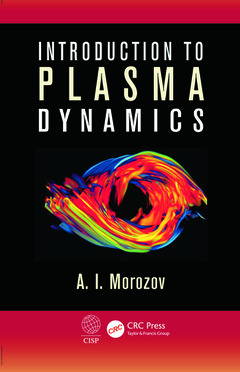Description
Introduction to Plasma Dynamics
Author: Morozov A. I.
Language: English
Subjects for Introduction to Plasma Dynamics:
Keywords
Magnetic Field; Distribution Function; Plasmas; Magnetic Lines; Plasma dynamics; Debye Radius; Plasma physics; Langmuir Waves; Plasma chemistry; Azimuthal Magnetic Field; Hydrodynamics; Plasma Flow; Plasma particles; Kinetic Equation; Plasma kinetics; Debye Layer; Debye length or Debye radius; Plasma Accelerators; Debye layers or Langmuir layers; GD; Langmuir frequency; Positive Column; Electromagnetic fields; Mirror Trap; Maxwell equations; Magnetic Surfaces; Stress tensor; Ad; Morphology of magnetic fields; Ionisation Front; Newton-Lorenz equation; Ionisation Zone; Zero-dimensional models of plasma systems; Cold Plasma; Classic corpuscular optics; Plasma Pinch; Vacuum corpuscular optics; Dielectric permittivity; Discharge Current; Railgun; Larmor Radius; Z-pinch; Plasma Configurations; Budker-Post trap; Plasma Volume; Euler equations; Plasma Systems; Magnetic hydrodynamics (MHD); Electron magnetic hydrodynamics; Hall structures; Larmor structures; Coulomb plasma; Boltzmann-Davydov equation; Radiation transition equation; Stationary Plasma Thruster (SPT) or SPD; Navier-Stokes equations; Prandtl blasius boundary layer; Electron boundary layers; Diffusion boundary layer; Driftelectronic boundary layers; Magnetron; Magneto-plasma compressor (MPC); Coaxial plasma accelerator; Hydrodynamic and plasma instabilities; Earth magnetosphere; Solar activity; Sun spots; Solar protuberances; Spacecraft propulsion; Ion thruster; Controlled thermonuclear fusion; Tokamaks; Thermonuclear reactor; LHD stellarator
Approximative price 293.12 €
In Print (Delivery period: 15 days).
Add to cart680 p. · 15.6x23.4 cm · Paperback
Description
/li>Contents
/li>Readership
/li>Biography
/li>
As the twenty-first century progresses, plasma technology will play an increasing role in our lives, providing new sources of energy, ion?plasma processing of materials, wave electromagnetic radiation sources, space plasma thrusters, and more. Studies of the plasma state of matter not only accelerate technological developments but also improve the understanding of natural phenomena. Beginning with an introduction to the characteristics and types of plasmas, Introduction to Plasma Dynamics covers the basic models of classical diffuse plasmas used to describe such phenomena as linear and shock waves, stationary flows, elements of plasma chemistry, and principles of plasma lasers.
The author presents specific examples to demonstrate how to use the models and to familiarize readers with modern plasma technologies. The book describes structures of magnetic fields?one- and zero-dimensional plasma models. It considers single-, two-, and multi-component simulation models, kinetics and ionization processes, radiation transport, and plasma interaction with solid surfaces. The text also examines self-organization and general problems associated with instabilities in plasma systems. In addition, it discusses cosmic plasma dynamic systems, such as Earth?s magnetosphere, spiral nebulas, and plasma associated with the Sun.
This text provides wide-range coverage of issues related to plasma dynamics, with a final chapter addressing advanced plasma technologies, including plasma generators, plasma in the home, space propulsion engines, and controlled thermonuclear fusion. It demonstrates how to approach the analysis of complex plasma systems, taking into account the diversity of plasma environments. Presenting a well-rounded introduction to plasma dynamics, the book takes into consideration the models of plasma phenomena and their relationships to one another as well as their applications.
Index. Fields, particles, blocks (point models). One-fluid plasma models. Two-fluid hydrodynamic plasma models. Collisionless kinetic models of processes in plasma Vlasov-Maxwell equations. Kinetics of two-component plasma in classic collisions. Plasma processes with transformation of particles and radiation. Interaction of plasma with the surface of solids. Instabilities and self-organisation of plasma dynamic systems. Processes in cosmos and plasma dynamics. Examples of modern plasma technologies. Appendices. Literature. Introduction.
Professor A. I. Morozov was one of the founders of plasma dynamics. His main scientific interests included plasma accelerators, plasma optics, magnetic plasma sustainment, and philosophy of science. He played a major role in the development and construction of space stationary plasma engines and worked at the Institute of Atomic Energy and the Kurchatov Institute in Moscow.
These books may interest you

Magnetohydrodynamics of Laboratory and Astrophysical PlasmasOf Laboratory and Astrophysical Plasmas 156.12 €

Plasma Physics and Engineering 184.47 €

Compact Plasma and Focused Ion Beams 208.65 €

